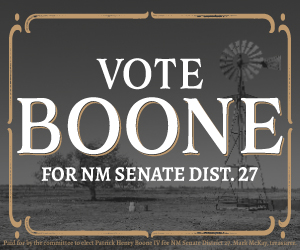Only in Your State | New Mexico | By Julie White | Revised by Jaymi Firestone
The murders of Colonel Albert Jennings Fountain and his young son Henry took place in February 1896. However, more than a century later, the case remains unsolved.

These crimes were shocking for several reasons: one of the victims was a child, the bodies were never found, and Fountain was a well-known, public figure.
Fountain originally hailed from New York. He then ended up in San Francisco, where he worked as a lawyer for many years, until he served in the Union Army during the Civil War. That’s how he wound up in New Mexico, where he married and settled down. Fountain fought the Apache and Navajo in New Mexico, before he ended up working as a lawyer again near Las Cruces.

Inevitably lawyers are associated with one side of a dispute and that creates enemies. However, Fountain acquired more enemies than most.
At the end of the 19th century, New Mexico was still a Territory, and a wild one at that.
Governor Sheldon appointed Fountain to head a volunteer taskforce against gang activity in Southern New Mexico. He was good at his job, taking down the Kinney Gang, a group operating out of Hillsboro, and the Farmington gang. He also served as a US District Attorney, targeting people who committed land fraud. So, it’s a safe bet that Fountain was unpopular in certain areas even before he entered the cutthroat realm of Territorial politics.
When he ran for office, his opposition was newcomer A. B. Fall (pictured below). Fountain triumphed and, thereafter, Fall became his nemesis.

The two feuded over the years following, and everyone was aware of the bad blood between them.
Fall, a lawyer himself, ended up representing a trio of men accused of unlawful cattle branding. These men were Oliver Lee, William McNew, and James Gilliland. The three men found themselves in a lawsuit with the operators of large-scale ranches in the area. As District Attorney, Fountain was the lawyer filing the suit. This brought the feud between Fall and Fountain to light again, as they were facing a dispute in court over the unlawful branding.
Fountain needed to travel to Lincoln, to the Lincoln County Courthouse to file the unlawful cattle branding charges against Oliver Lee and the 2 others.
The trip from Las Cruces, where Fountain was residing, was just shy of 150 miles, so he took his 8-year-old son, Henry, along for the ride.
While in Lincoln, filing the charges with the courts, Fountain received an anonymous death threat. The note ordered him to abandon the suit or he would not survive his trip back. Fountain ignored the threat and filed the suit.

On the trip back, the death threat was made a reality, when Fountain and his son vanished near San Agustin Pass by Chalk Hill.
Their looted wagon – along with the death threat he had received – was found 12 miles away, on what is now White Sands Missile Range. Bloodstains marred the white gypsum crystals on the ground. Neither man nor child was ever seen again.
Trails from several horses were found at the crime scene. Some of these could supposedly be tracked to the ranch of Oliver Lee (pictured below). He, along with McNew and Gilliland were named as suspects.  Retired Sheriff, Pat Garrett, who is best known for shooting Billy the Kid to death, was brought in to handle the situation. However, the fugitives refused to turn themselves in to Garrett, fearing that he’d kill them as he did Billy the Kid.
Retired Sheriff, Pat Garrett, who is best known for shooting Billy the Kid to death, was brought in to handle the situation. However, the fugitives refused to turn themselves in to Garrett, fearing that he’d kill them as he did Billy the Kid.
This left the men in a stalemate.
In 1898, 2 years after the mysterious murder, politicians in the area carved up Dona Ana County, using some of its land to form the new Otero County.
By doing so, jurisdiction for the Fountain murders shifted from Garrett to officials in Otero County.
The three suspects gave themselves up and, in the summer of 1899, they went on trial in Hillsboro with Fall as their lawyer. After only a 7 minute deliberation, the jury declared the men innocent.
Oliver Lee went on to became a state representative and a senator for New Mexico.
Some of his land is now the 640-acre Oliver Lee Memorial State Park, which includes the reconstruction of his Dog Canyon Ranch where many movies have since been filmed in the state.
It is said that the crime may have been committed by the notorious outlaw Black Jack Ketchum. His brother, Sam Ketchum alleged that Black Jack had confessed to committing the crimes in retaliation for Fountain prosecuting his cohorts.
By that point, Black Jack had already received the death penalty, so it’s hard to know if there was any truth to the claim. It wouldn’t have changed his fate.
The question still remains as to who is responsible for the murders of Albert and Henry Fountain. Were the trio of ranchers responsible? Was Black Jack Ketchum? We will probably never know.






























